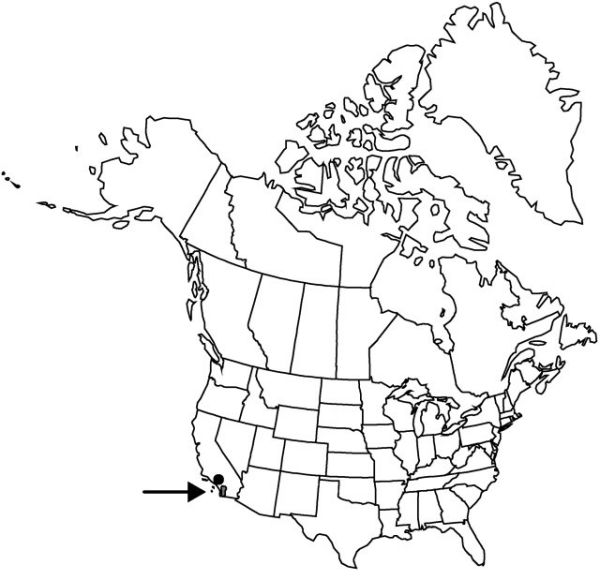Nolina cismontana
Novon 5: 162. 1995.
Plants caulescent; rosettes from woody, branched caudices and forming small colonies. Stems to 3 dm, occasionally to 15 dm. Leaves 30–90 per rosette; blade wiry, upright, or lax, 50–140 cm × 12–30 mm, occasionally glaucous; bases broad, spoon-shaped, 30–85 mm; margins serrulate, not filiferous. Scape 4–15 dm, 14–35 mm diam. at base. Inflorescences compound paniculate, 9–18 dm × 10–40 cm; bracts persistent, conspicuous; bractlets laciniate. Flowers: tepals 2–5 mm; fertile stamens: filaments 2–4 mm, anthers to 1.2 mm; infertile stamens: filaments 1–1.2 mm, anthers 0.4–0.6 mm; pedicel erect, proximal to joint to 2 mm, distal to joint 1–3 mm. Capsules thin-walled, 8.2–11.2 × 9–12 mm, notched basally and apically. Seeds reddish-brown, ovoid, bursting ovary wall, 4–5 3–4 mm.
Phenology: Flowering early–mid spring.
Habitat: Rocky hillsides in dry chaparral of coastal mountains
Elevation: 200–1300 m
Discussion
Of conservation concern.
P. A. Munz and J. C. Roos (1950) mistakenly believed that this coastal entity was the basis of Nolina parryi S. Watson (J. C. Dice 1988). Dice determined that it is not “typical” N. parryi and is sufficiently distinct to recognize separately. Few populations of N. cismontana exist, and they are of conservation concern.
Selected References
None.
Lower Taxa
"dm" is not declared as a valid unit of measurement for this property."dm" is not declared as a valid unit of measurement for this property. "dm" is not declared as a valid unit of measurement for this property."dm" is not declared as a valid unit of measurement for this property."dm" is not declared as a valid unit of measurement for this property.
